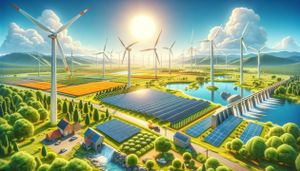Recent severe weather events have heightened concerns over hydropower projects in the Himalayas, particularly those along the Teesta River, where landslides and flash floods have wreaked havoc. At least 14 hydropower projects were damaged due to flash floods hitting Himachal Pradesh since July 25, as the region continues to grapple with the consequences of climate change and infrastructural vulnerabilities.
Among the most affected projects is the Teesta-V power station operated by the National Hydroelectric Power Corporation (NHPC), compromised by landslides on August 20, 2024. Fortunately, the site was evacuated prior to the incident, preventing any casualties; it has remained non-operational since October 2023 due to earlier disruptions caused by glacial lake outburst floods.
The relationship between hydropower projects and environmental degradation has become increasingly contentious. Local communities express fears of adverse impacts on their environment, urging authorities to rethink current development strategies and reassess existing projects.
For decades, the Teesta River has been targeted for energy extraction. Despite its potential, only five out of 47 proposed projects have come to fruition, highlighting the difficulty of balancing energy needs against ecological preservation.
Experts point to inadequate disaster risk analyses and environmental assessments as major oversights. They argue communities need effective early warning systems and comprehensive disaster management plans to mitigate the risks associated with hydropower projects.
The Teesta-3 power project, once the largest hydroelectric project with 1,200 MW capacity, was similarly compromised by last year's flash floods following the outburst from the South Lhonak glacier. With only about ten percent of its original power capacity still operational, the project's struggles are indicative of broader issues facing the hydropower sector.
Heavy rainfall and unstable geological factors have prompted citizens to seek more sustainable alternatives to hydropower. They Highlight the environmental costs of such projects and question the efficacy of the government’s current approach to hydropower development.
These concerns align with the sentiments expressed by ecological and community leaders. They push for reassessments of the environmental impact of the NHPC projects and assert the need for comprehensive studies to inform future developments.
The detrimental effects of the recent landslides go beyond immediate infrastructural damage; they signal long-term geological instability exacerbated by extensive tunneling and blasting activities associated with these hydropower initiatives. The fear grows among local activists and community members as very real risks loom over their livelihoods.
Jairam Ramesh, AICC general secretary, condemned the causative link between these disasters and the proliferation of hydropower projects, stressing the eroded resilience of the land. "The October 2023 disaster was triggered by glacial lake outburst floods (GLOF), but its catastrophic scale was exacerbated by the failure of the Teesta-III dam," Ramesh noted, illustrating the connection between poor project management and severe environmental repercussions.
While hydropower may promise economic development, it also must be viewed critically alongside its capacity to exacerbate the climate crisis. The cascading environmental effects of damming rivers draw attention to the complex interplay between energy production and ecosystem health.
Recent incidents have catalyzed public discourse around the sustainability of hydropower. Regions like Sikkim, affected significantly by environmental changes and infrastructural negligence, are demanding shifts toward more resilient forms of energy generation.
Despite governmental assurance for future support post-disaster, many question the credibility of such promises without concrete action plans. The intersection of hydropower projects and ecological conservation calls for urgent evaluation and, potentially, systemic transformations moving forward.
Rising temperatures and the unpredictable nature of weather present growing uncertainties for communities reliant on hydropower. The catastrophic consequences of environmental mismanagement necessitate urgent, firm changes to safeguard local ecosystems and livelihoods.
Disasters have underscored how failing to heed local voices and environmental regulations has cascading risks. Leadership must address the fears and needs of communities facing the consequences of climate change exacerbated by infrastructural choices.
The reaffirmation of public demand for sustainable energy practices reveals broader discontent with current initiatives viewed as harmful or inadequate. Residents feel it's time for accountability and tangible reassessments on how energy projects shape their communities.
Himalayan hydropower projects exemplify the delicate balance required to navigate between energy needs and environmental sustainability. The plight of affected communities continues to be heard and recognized, signaling the call for greater oversight and responsible planning.
The cumulative impacts of climate crises necessitate urgent dialogues among stakeholders, including local residents, policymakers, and environmental experts. Together, they can work toward shaping sustainable pathways for energy generation and ecological health.
Recent disasters remind everyone how nature’s fury can expose systemic vulnerabilities within energy frameworks. The focus now must shift toward integrating science and community insights to create sustainable energy solutions ready for the challenges of climate change.
Local and national leaders must embrace innovative approaches to energy production without forsaking environmental stewardship. The road forward holds the promise for change, contingent on proactive engagement and transparent practices moving forward.
The narrative is one of resilience amid devastation—a community refinding its voice as advocates for both their needs and the environment. It’s time for governmental strategies to evolve, marrying energy solutions with ecological consideration.
Decommissioning unsustainable projects and redirecting efforts toward renewable energy sources may soon become necessary. The richer green energies hold promise not only for addressing power needs but for conserving delicate ecosystems.
Only then, advocates argue, can there be hope for securing safe, functional landscapes where people and nature can thrive without fear of destructive disasters.
Residents urge their leaders to reprioritize community welfare alongside energy ambitions. The apostolic call for greener practices can guide against the threats faced from climate imperilments.
This chapter of hydropower investment serves as both cautionary and aspirational—a strong reminder of why ecological balance must guide energy ambitions.



